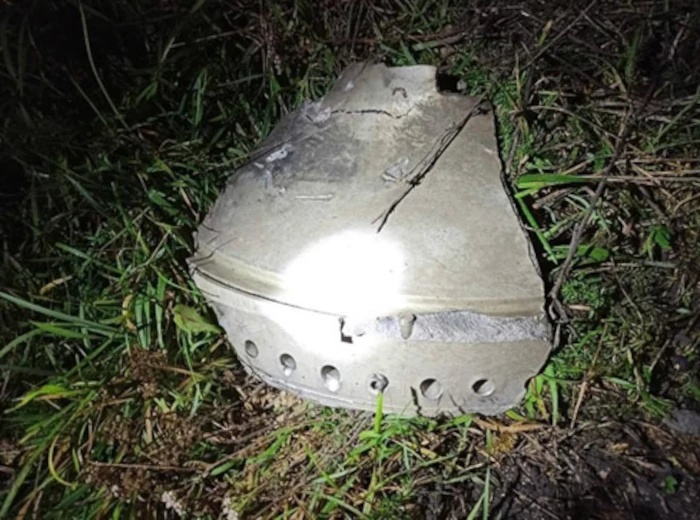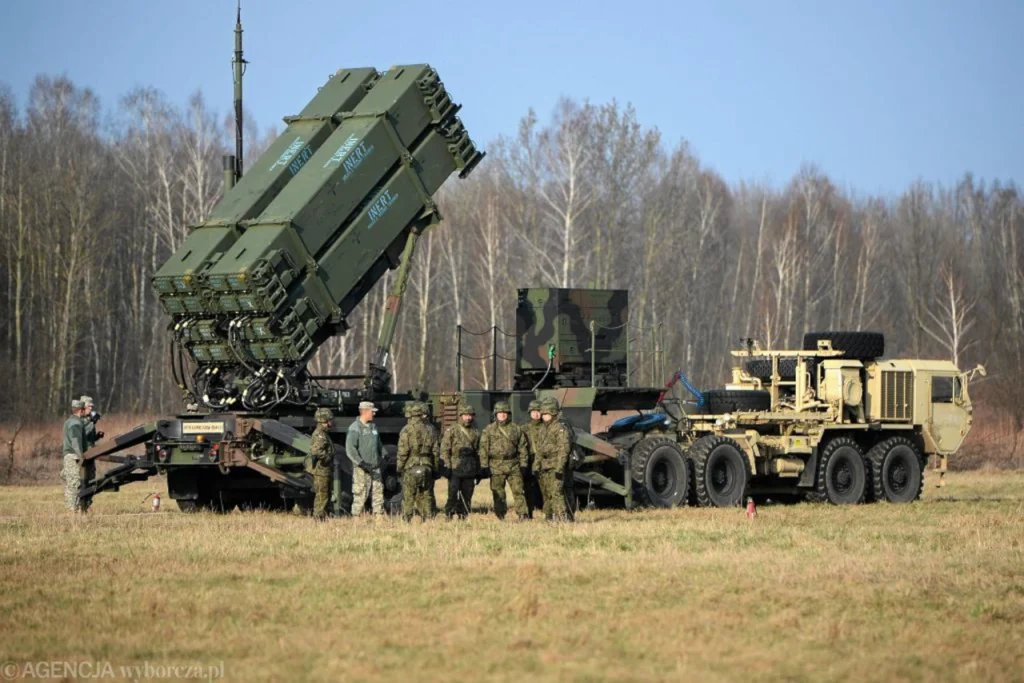The 5V55 missiles, normally fired from the S-300P anti-aircraft missile system, fell near the town of Hrubieszow in the Lublin Voivodeship of Poland on the border with Ukraine, killing two poles.
The Ukrainian Air Defense Forces make use of S-300 systems. Apparently, with their assistance, Kyiv attempted to repel the Russian Armed Forces’ onslaught. As a result, one of the missiles veered off course and crashed into Polish territory.
The furthest estimates of S-300 missiles modified by the Russians to hit ground targets are estimated to have a range of 120 km. Neither Russia nor Belarus are within 120 km of Przewodów, Poland, where the S-300 missile fell.

While even amateur defence enthusiasts could analyze the video footage and distances, the US led NATO was all over the place.
As per flight trackers, an American warplane flew for a long time over the Lublin region of Poland, where Russian missiles allegedly landed. Also, a Northrop Grumman RQ-4 Global Hawk, a remote-controlled high-altitude reconnaissance aircraft, was seen in the skies over Poland. The drone, with registration MM-AV-SA-001, belongs to the Italian Air Force. The drone is parked at the Sigonella airbase in Sicily.
The RQ-4 Global Hawk is the pride of NATO, and nothing can hide from its gaze.
How the NATO decision making crumbled
Let’s look at the reaction of the NATO leadership after the missile incident. NATO leaders had no clue where the missiles came from and hit the areas close to NATO logistic route for Ukraine. It is evident by the headlines of the newspapers in the next 24 hours.
- US cannot confirm details of missile incident in Poland but intends to establish facts and decide next steps – White House.
- NATO allies are holding consultations on the incident in Poland; all facts must be established – NATO Secretary General Stoltenberg
- Biden’s national security adviser Sullivan held talks with his Polish counterpart after the incident in Poland, the White House said.
- Biden informed about the incident in Poland; the US leader intends to speak with his Polish counterpart soon – Reuters.
- The head of the European Council said he would convene a meeting of EU leaders at the G20 summit regarding the incident in Poland.
- Polish President Andrzej Duda decided to convene a NATO council on November 16 – media.
- Head of the Polish National Security Office, Sivira: Polish President Duda is speaking with US President Joe Biden.
- The leader of Poland, after a conversation with Biden, speaks with Zelensky – Polish authorities.
- NATO ambassadors to meet on Wednesday at Poland’s request based on Article 4 of the Alliance – Reuters sources
- Poland hosts a meeting of the Council of Ministers on the topic of national security.
As time passed by, the reactions changed.
- Speaking on anonymity, several US officials said that according to preliminary estimates, Ukrainian troops fired missiles while trying to shoot down a Russian projectile during a “crushing salvo in Ukraine’s Energy Infrastructure on Tuesday.”
- Washington asks Poland not to make hasty statements, asks that they coordinate with the allies. The risks are too high.
- Polish President Duda said there was no definitive evidence of who fired the rocket that fell in the east of the country, Reuters reported. Doubt: What happened was an “isolated incident.”
- BBC diplomatic correspondent Paul Adams, commenting on what happened in Przewodow, says: “Russia has no interest in attacking Polish farms. The Polish government has yet to confirm the information about what happened near its border with Ukraine.
- But the images circulating on social networks show a crater, an overturned tractor carrying wheat and fragments of a missile.
- A Pentagon spokesman has said that he is aware of what happened but still does not have any supporting information. There are plenty of possible explanations for what happened. Sure, Russia has no interest in bombing Polish farms. It will be a technical glitch.”
- The BBC later polled three military experts: Mark Cancian from CSIS, Andrés Gannon from the US Council on Foreign Affairs and Justin Bronck from Rusi. The three confirm that it is an S-300 “surface-to-air” missile, “usually used for anti-aircraft defence.”
- Biden informed NATO and G7 partners that the explosion in Poland was the result of Ukrainian air defence: media.
One can easily imagine the state of NATO surveillance capabilities. This incident happened before. On the night of March 11, a UAV crashed near the capital of Croatia, Zagreb, which was identified as a Soviet reconnaissance drone Tu-141 Strizh (Swift), also called VR-2. The drone flew 1300 km and then fell when it ran out of fuel. It crossed all of Hungary and parts of Romania until it reached Croatia; however, the NATO radars were not able to detect it.
The state of Polish anti missile defence
The Polish Patriot air defence systems began to justify themselves because they “did not have time” to respond to a target that flew only 7.5 km from the border. Why didn’t the “most powerful air defence systems in the galaxy work?”
“No army has an air defence system that protects the entire territory of the country. (A) Missile attack is characterized by a point strike on a selected target rather than destroying multiple targets over large areas. The tasks of the systems include (the) defence of critical infrastructure,” said the General Command of the Armed Forces Branches.

Simply put, the skies are protected from enemy planes and missiles. – AA defence is surface; you have to destroy the target in some area. Missile defence is typically point-based – you want to defend a critical facility or a group of troops – explains the serving Polish Army source of the Polish newspaper “Dziennik Gazeta Prawna.” In the event of such a threat, it is always important to assess whether there is something in the area that we want to defend. – Probably also in the case of the rockets that fell on Poland, such an analysis was made. It probably showed that the bullets would hit the field. The source adds that it was bad luck that a tractor was driving there, and two people died. It could also be a bullet unexpectedly changed flight trajectory due to a fault or lack of fuel. This event does not give grounds to assess the performance of the sky defence quality over Poland.
This does not say anything about the Alliance’s ability to defend the skies – emphasized Jens Stoltenberg, secretary general of the North Atlantic Alliance, at yesterday’s press conference.
Currently, anti-missile and anti-aircraft systems, both allied and Polish, protect the Polish skies. Shortly after Russia’s special operations against Ukraine, the United States dispatched the Patriot anti-missile system to Poland, where it is stationed in the vicinity of the Rzeszów-Jasionka airport, a vital supply hub for aiding the Ukrainians. Its mission is to defend Poland’s southeast border against enemy missiles. The British provided personnel from the 16th Royal Artillery Regiment and the Sky Saber anti-aircraft system. On the other hand, the Poles have access to the anti-aircraft systems S-125 Newa/Pechora. There is a significant likelihood that if an enemy missile or aircraft entered space above Poland, one of these systems would disable it. However, if a lone gunman armed with a Buk launcher fired at a civilian aircraft over northeastern Poland, the chances of successfully defending the aircraft would be low.
The Polish Army is actively building a multi-layered air defence system, such as through the programmes “Wisa” (the Patriot system, of which the first two batteries will be operational next year), “Narew,” and “Pilica.” If Poland executes the proposed agreements in the next months, the Polish sky defence will be among the most sophisticated in the world within five or six years.
